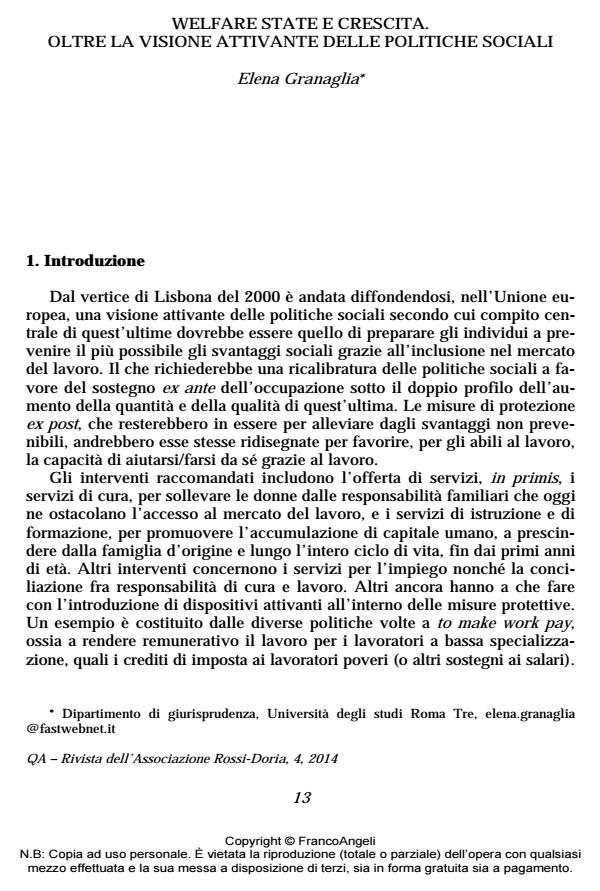Welfare state e crescita. Oltre la visione attivante delle politiche sociali
Titolo Rivista QA Rivista dell’Associazione Rossi-Doria
Autori/Curatori Elena Granaglia
Anno di pubblicazione 2015 Fascicolo 2014/4
Lingua Italiano Numero pagine 24 P. 13-36 Dimensione file 100 KB
DOI 10.3280/QU2014-004002
Il DOI è il codice a barre della proprietà intellettuale: per saperne di più
clicca qui
Qui sotto puoi vedere in anteprima la prima pagina di questo articolo.
Se questo articolo ti interessa, lo puoi acquistare (e scaricare in formato pdf) seguendo le facili indicazioni per acquistare il download credit. Acquista Download Credits per scaricare questo Articolo in formato PDF

FrancoAngeli è membro della Publishers International Linking Association, Inc (PILA)associazione indipendente e non profit per facilitare (attraverso i servizi tecnologici implementati da CrossRef.org) l’accesso degli studiosi ai contenuti digitali nelle pubblicazioni professionali e scientifiche
Welfare state e crescita. Oltre la visione attivante delle politiche sociali In questi ultimi decenni è andata diffondendosi in Europa una visione attivante delle politiche sociali, finalizzata al sostegno dell’occupazione e alla qualificazione del capitale umano. Tale visione ha diversi elementi attraenti sotto il profilo della crescita e dell’uguaglianza di opportunità. Cionondimeno, l’articolo porta l’attenzione su due criticità: 1) il rischio di incoerenza istituzionale; 2) il rischio di indebolimento della giustizia sociale. Rimediare a tali criticità richiede di abbracciare una concezione più articolata dei nessi fra politiche sociali, mercati e crescita.
Parole chiave:Stato di investimento sociale, Politiche sociali e crescita, Modernità dell’uguaglianza di condizioni
- Le imprese recuperate dai lavoratori in Italia. Una sperimentazione territoriale di reciprocità Romolo Calcagno, in SOCIOLOGIA URBANA E RURALE 116/2018 pp.59
DOI: 10.3280/SUR2018-116005
Elena Granaglia, Welfare state e crescita. Oltre la visione attivante delle politiche sociali in "QA Rivista dell’Associazione Rossi-Doria" 4/2014, pp 13-36, DOI: 10.3280/QU2014-004002